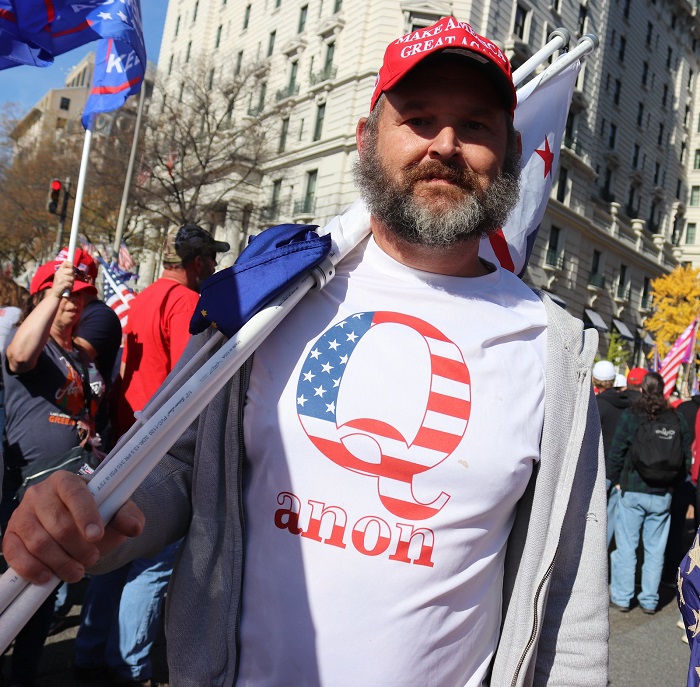The Right Weaponizes America Against Itself
Bret Stephens
The New York Times – 18.5.2022
In the broadest sense, what goes by the name “replacement theory” — the idea that American elites are conspiring to replace so-called real Americans with immigrants from poor countries — is merely a description of the American way, enshrined in tradition, codified by law, promoted by successive generations of American leaders from Washington and Lincoln to Kennedy and Reagan.
There have been four, arguably five, great replacements in American history.
The first was the worst and the cruelest: the destruction — through war, slaughter, ill-dealing and wholesale expulsion — of Native Americans by European migrants. The same far-right true believers who now scream about their own purported replacement by the non-indigenous tend to be the most indignant when reminded that at least some of their ancestors were once the replacements themselves.
The second was a religious replacement of Protestants, who now number fewer than half of all Americans. It began at least as far back as 1655, when the Dutch West India Company rejected a petition by Peter Stuyvesant to expel Jews from New Amsterdam. (Doing so, the company wrote, would be “somewhat unreasonable and unfair.”) It accelerated in the 19th and 20th centuries, mainly thanks to the mass migration of Catholics from Europe and, later, Latin America. It continues with the arrival of Muslims, Buddhists, Hindus and others, along with a more general loss of faith.
The third was the ethnic replacement of the English. With their arrival in North America came indentured servants from Ireland and continental Europe, then immigrants from Germany, France and Ireland, later from places ever farther east. Willa Cather’s “My Ántonia,” the American prairie classic, is a story of settlers from Bohemia and other places in Central Europe, who soon became the backbone of the American Midwest.
Non-Europeans had a tougher time. The descendants of enslaved captives from Africa, the only replacements who came against their will, faced years of resistance even after emancipation. And the first major federal law to restrict immigration was the Chinese Exclusion Act of 1882.
The fourth replacement was of WASP elites. “A furtive Yacoob or Ysaac, still reeking of the ghetto, snarling a weird Yiddish to the officers of the customs” was how Henry Adams, John Quincy’s grandson, sneeringly described the immigrants he saw in New York. Within a generation, those Yacoobs and Ysaacs would be Goldmans, Frankfurters, Salks, Rickovers and Bellows. To judge by enrollment figures at Brooklyn Tech or elite universities, the next generation of elites will also be immigrants or their children, many from South or East Asia.
The fifth is the most contentious but also the most routine and unexceptional: the alleged replacement of the native-born white working class with a foreign-born nonwhite working class. In this telling, Washington policy, from the 1965 Immigration and Nationality Act to the 1994 North American Free Trade Agreement to current enforcement failures at the border, are part of a broad conspiracy to give American businesses cheap labor and Democratic politicians ready votes.
This is both nothing new and nothing at all. The United States has, from its earliest days, repeatedly “replaced” its working class with migrants, not as an act of substitution, much less as a sinister conspiracy, but as the natural result of upward mobility, the demands of a growing economy and the benefits of a growing population. The idea that NAFTA simply caused jobs to flee the United States sits at odds with the fact that the labor-force participation rate in the United States grew to its peak in the years immediately after the signing of the agreement.
What all of this says is that the phenomenon of replacement, writ large, is America,
The first immigration bill was passed by the first Congress and signed into law by the first president. The American heartland was almost certainly more linguistically diverse in the 1890s than it is today — and adult immigrants often never learned to speak more than rudimentary English. The people who today think of themselves as regular Americans, people with surnames like Stefanik, Gaetz or Anton, would, on account of their faith or ethnicity, have been seen by previous generations of nativists as uncouth and unassimilable, dirty and disloyal.
All this is of a piece with our traditional self-understanding as a country in which a sense of common destiny bound by ideals matters more than common origins bound by blood. It’s also necessary to any form of conservatism that wants to draw a line against blood-and-soil nationalism or white-identity politics. You cannot defend the ideal of “E pluribus unum” by deleting pluribus. To subscribe to “replacement theory” — the sinister, conspiratorial kind now taking hold of parts of the right — is to weaponize America against itself.
I’m writing this in the wake of Saturday’s massacre in Buffalo, whose alleged perpetrator wrote a racist and antisemitic rant about replacement theory. It’s usually a mistake to judge an idea based on the behavior of some deranged believer. It’s also unnecessary. The danger with replacement theory in its current form isn’t that a handful of its followers are crazy but that too many of them are sane.











